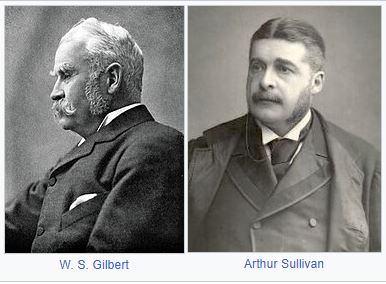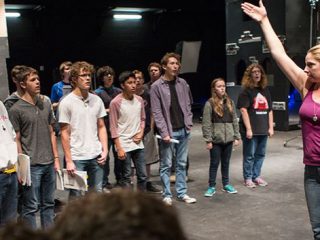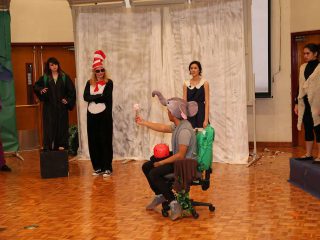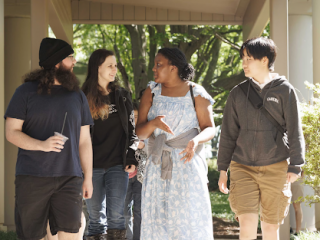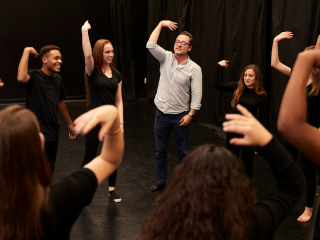You know the drill – your classes are a beautiful hodgepodge of students. You have a mix of grade levels. Maybe some of your students have taken your class before. Some of them have experience in theatre. Some have none at all. And some are just there hoping for an easy ‘A’. How do you create a meaningful learning experience out of this random mix? Here are some tips that might help.
Create purposeful groups
If you do group projects, you probably know that when students choose their partners, they choose their friends. That inevitably leads to groups of the same grade and skill levels, and finished products that reflect that. There are some projects where I let students choose their own groups. But for most, especially early in the year when we’re still getting to know each other, I assign the groups. I try to balance grade, experience, and maturity levels, but this can be tough with smaller classes or classes that skew towards one level. In that case, intentionally pairing students with a single partner is sometimes the best route. Regardless of how you set up group work, balance can help teach effective collaboration and lead to more dynamic products.
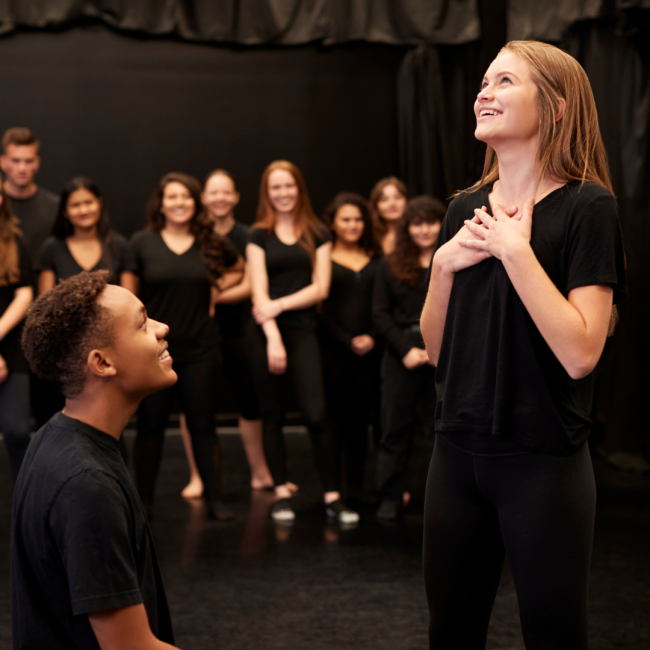
Offer choices
Think about the end goal of your assignment or project. What do you want students to learn? What does the ideal finished product look like? Then, work backward and think of a few ways students can get there. I try to offer three options that accommodate three basic levels: beginner, intermediate, and advanced. The key, and it’s sometimes challenging, is to make each option equally rigorous for that skill level.
Provide leadership opportunities
I’m always looking for new ways to incorporate peer-guided learning into my classes. As you get to know your students, you’ll recognize who your natural leaders are. Then, create opportunities for them to lead. It might be acting as a group’s ‘stage manager’ or teaching younger students something. As my program has grown, I’ve gotten a lot of students who are interested in stage lighting, so I set up an informal peer mentoring program. It started with one student; I taught him the basics of the light board in his sophomore year and by his senior year he was teaching the underclassmen!
Limit direct instruction
There’s nothing wrong with a lecture, especially when first introducing a concept. But in the mixed-level classroom, it isn’t always the most effective. I usually only use direct instruction if it’s the first time everyone in the class is getting the information. Otherwise, a ‘flipped classroom’ model can lead to good student-led discussions. Post a reading or a video related to the material and then ask the students to reflect on it, ask clarifying questions, and share their main takeaways.

Give students agency
It’s a given that students are more invested when they have some agency over what and how they learn. I use a simple survey at the beginning of the year where students tell me what areas of theatre they’re most interested in and how comfortable they are with things like monologues or improv. That helps me design the class to tailor their interests and goals, and gives me a sense of how to utilize students’ individual skills.
There are a lot of other factors that might play into your classroom, and there’s no one-size-fits-all solution. But hopefully, at least some of these tips will help lay the groundwork for a successful year, no matter what your classes look like!
For further inspiration, check out our blog posts on Whole Class Warm-Up Games and How to Navigate Touch Conversations in the Classroom.



